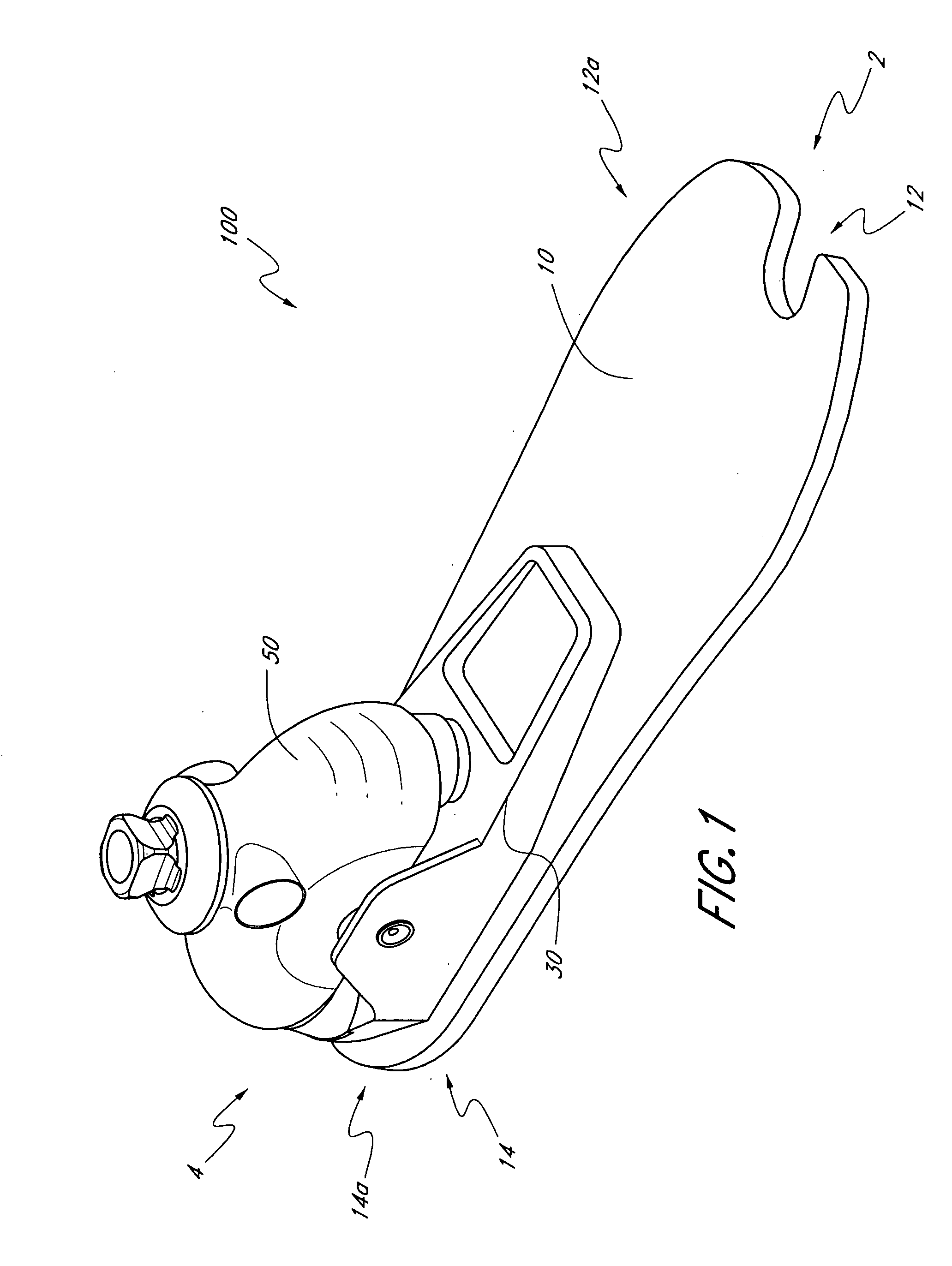Prosthetic foot with rocker member
a technology of prosthetic feet and rockers, applied in the field of lower limb prostheses, can solve the problems of less efficient energy storage and release during motion of the foot, difficult to wholly contain in a cosmesis, bulky foot designs, etc., and achieves the effect of increasing the roll-up effect, facilitating the initial roll-up of the rocker member, and facilitating the introduction into and removal
- Summary
- Abstract
- Description
- Claims
- Application Information
AI Technical Summary
Benefits of technology
Problems solved by technology
Method used
Image
Examples
Embodiment Construction
[0031]FIGS. 1-2A illustrate one embodiment for a prosthetic foot 100 extending between a toe section 2 and a heel section 4. Preferably, the prosthetic foot 100 comprises a foot member or support 10 which may have an elongate configuration having a length L extending between a front end 12 and a rear end 14. As used herein, length L refers to the horizontal length of the foot member 10 along a plane parallel to a support surface S on which the prosthetic foot 100 rests. Preferably, the length L can be between about 18 and 40 cm, corresponding to the size of the prosthetic foot 100, when the foot 100 has a neutral heel height position, as described below. In one embodiment, the length L is about 25 cm. However, the length L can have other values and can vary as the heel height position of the prosthetic foot 100 is adjusted. The foot member 10 also preferably comprises an anterior portion 12a, a posterior portion 14a, and an intermediate portion 16. In one embodiment, the anterior po...
PUM
 Login to View More
Login to View More Abstract
Description
Claims
Application Information
 Login to View More
Login to View More - R&D
- Intellectual Property
- Life Sciences
- Materials
- Tech Scout
- Unparalleled Data Quality
- Higher Quality Content
- 60% Fewer Hallucinations
Browse by: Latest US Patents, China's latest patents, Technical Efficacy Thesaurus, Application Domain, Technology Topic, Popular Technical Reports.
© 2025 PatSnap. All rights reserved.Legal|Privacy policy|Modern Slavery Act Transparency Statement|Sitemap|About US| Contact US: help@patsnap.com



